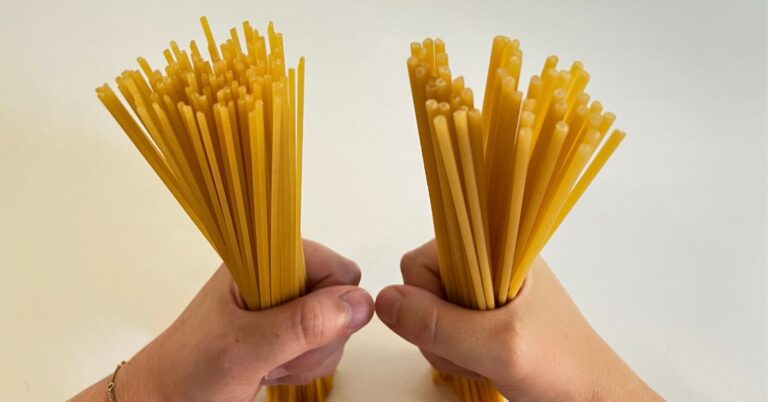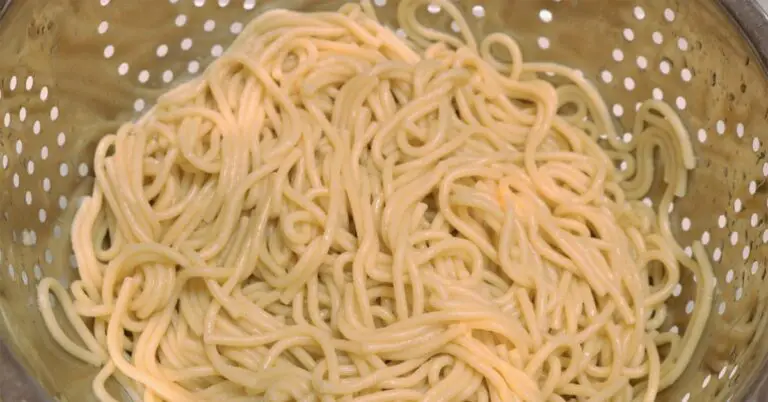Many combinations of sauces, condiments and pasta shapes, for Italians are part of our cultural and gastronomic luggage, to the point that, in front of some weird combination, we can even turn up our noses.
However, we are open to contamination and variations, experimentation is always welcome… provided that we find ourselves in front of pasta carefully cooked al dente and in salted water, of course!
So, what are the 100% Italian approved pasta and sauce combos?
I will give you an overview of suggestions: I promise you that, at the end of this virtual trip through Italian-style pairings, you will never look at a plate of pasta with the same eyes again.
Indeed, every pasta/sauce pairings brings with it a load of culinary, social and gastronomic experiments from hundreds of years of Italian history, as if it were the result of a sort of popular jury, composed of our ancestors, who decreed the best combinations.
Why is it so important to choose the right pasta shape to match the sauce?
No one in Italy forbids you to prepare penne with garlic, oil and chili pepper; however, I doubt that the result could be even remotely comparable to that obtainable with spaghetti (spaghetti aglio e olio). Yet, despite the pasta shape, the durum’ taste of wheat pasta is always the same, if the same quality; what does change then? The shape, indeed!
The pasta’s shape, its size, thickness, its porosity or general structure is capable of combining better or worse with certain sauces.
Think of pasta with peas: do not you think that every bite can become richer if, instead of long pasta, you use bowl or tube shapes, in which the legumes can get stuck?
Choosing the right sauce for each shape of pasta allows you to enhance the features of the various formats (resistance in cooking, chewability, more or less rough surface, ability to keep al dente cooking). Contrary to what is commonly thought, the different types of pasta are not just aesthetic gimmicks, but each responds to different needs in the kitchen.
Here, it is on this type of reflection that the Italian sauce-pasta shape combinations are based: and, after having tried a few, I bet you will understand our obsession.
Long pasta: how to choose the right sauce?
Let’s start with the long pasta shapes and all their variations: spaghetti, linguine, bucatini, for durum wheat. Tagliatelle, pappardelle, fettuccine, for the rough and egg variants.
These varieties generally are the best with very liquid or even full-bodied sauces, provided they are not too solid. Also excellent if they are paired with quick sauces based on butter or fresh tomato. An unwritten Italian law ensures that “if you don’t risk getting dirty with every bite, then it’s not a good dish of long pasta!”
Best sauce to pair with Angel Hair
Capellini or Angel Hair represent the format of long pasta with a circular section and the smallest diameter. They are cooked with simple toppings, many of which are butter-based (butter and cheese, butter and sage), or in broth. Never use just the heavy cream though.
The reduced thickness measurements also make them perfect for baked pies, but do not be fooled by this apparent fragility: these macaroni resist spectacularly high temperatures, keeping their structure intact.
Of central-northern origin, capellini have long been considered an exclusive and refined pasta shape, since their hand-making required great skill.
Best sauce to pair with Fettuccine
Fettucce and fettuccine differ in thickness: with a flat section, there are different sizes, all identifiable through a number. Simple or rougher, made of durum wheat or with egg, they owe their name to the resemblance to the strips once used for hemming clothes.
In general, they require a fairly long cooking (even 10 minutes till al dente texture) and intense combinations with sauces based on hunting, fish, molluscs and seafood. Also perfect with the classic Sunday ragù, the one that has simmered in a pot for several hours before being creamed with the pasta.
Best sauce to pair with Linguine
Linguine is a shape of pasta very similar to spaghetti but with a flat section. Born in Genoa, initially with the name of trenette, you can also find them on supermarket shelves with the name of bavette.
Actually, there would be small details to differentiate these three varieties: linguine, in fact, have a rectangular section while trenette are square; finally, the bavette identifies something in between with spaghetti, but always with a rectangular section.
Genoa is a seaside city and it is therefore not surprising that linguine find the ideal combination with fish or with Genoese pesto: very popular are linguine all’astice, linguine allo scoglio, linguine mare e monti and linguine with seafood, clams and scampi, present on the menus of all the Italian fish restaurants in the world. There are also some niche offerings, like linguine with squid ink.
Best sauce to pair with Spaghetti
Born in the context of ancient China and the era of our Arab Sicily, spaghetti is the pasta format par excellence, the one that speaks of Italy in the world and has inspired posters, movies, photographs, paintings, even modern emojis.
Incredibly versatile and loved, they are always present in the cupboards of every family and, in Italy, they become irreplaceable companions for night-time feasts with friends AKA Spagettata! the famous “midnight spaghetti”, which are nothing more than a smart version of spaghetti with garlic, oil and chili.
This long pasta can be combined with both hot and cold sauces, generally based on tomatoes, vegetables or aromatic herbs, even spicy ones. It is also widely used with fish sauces.
Best sauce to pair with Spaghetti rigati
There are several variations of spaghetti: it is impossible not to mention spaghetti alla chitarra, particularly rough and with a square section (the name derives from the ancient tool with which they were made, a wooden frame on which thin steel wires were stretched which resembled, in fact, a guitar), very combined with particularly rich sauces, like meat sauce, tomato with tiny meatballs or with aubergines.
Spaghetti rigati are very similar, whose wavy surface was created to better trap the sauces and thus create more voluptuous mouthfuls.
Best sauce to pair with thick Spaghetti
Thick spaghetti is known in Italy as spaghettoni: it is thicker and more full-bodied spaghetti, particularly suitable for dishes with very strong flavors, like sauces based on pumpkin, lamb, molluscs and chicken giblets. They are also chosen to accompany the carbonara which, especially in the Rome district, is more of a religion than a recipe.
Best sauce to pair with thin Spaghetti
Thicker than capellini but thinner than normal spaghetti: they are thin spaghetti, known in Italy as spaghettini. It seems incredible I know, that all these variations exist for the same pasta shape.
These thin spaghetti are usually served with oil or fish-based sauces, especially tuna, but there are also more classic tomato-based inspirations. When they are broken up, spaghettini are often used as an enrichment for broths and soups.
Short pasta: how to choose the right sauce?
The range of formats for short pasta is equally wide. Also in this case there are, of course, striped variants, more and less rough.
The favorite sauces for this type of macaroni are of two types: light, based on vegetables and greens, or dense, not very homogeneous and wrinkled, such as ragù or cacciatora. The creamy inspirations are also excellent, like those based on cream and/or cheese, and the classic intentions, like the good old fresh tomato with fragrant basil leaves.
Best sauce to pair with Campanelle
There are pasta shapes that are more famous abroad than in Italy or that are available in some regions more than in others. One of these is campanelle: their shape, in fact, is very particular, grooved and jagged, as if to evoke the petals of flowers.
An incredibly suitable shape for holding sauces in its center and which makes this pasta particularly suitable for vigorous sauces based on dairy products (cheese, cream, béchamel) or legumes and vegetables (like beans, lentils, broccoli, cabbage, carrots and other crunchy vegetables). It is not impossible to find it also combined with something more classic, such as tomato and fish, but it is not their best consecration.
Best sauce to pair with Cellentani
Cellantani are better known in Italy with the name of tortiglioni or cavatappi (the Italian equivalent of corkscrew) due to their singular shape of helical tube. Usually, it is a striped pasta whose concept is based on the idea of giving life to very rich morsels, full of sauce and flavor.
A complex shape immediately makes you think of something very elegant but, at the same time, modern, with the sinuous and grooved structure that houses, in the center, a hole that crosses the entire macaroni becoming a channel.
This refinement goes perfectly with fresh sauces, cold recipes but also with oil and dairy-based sauces; and not only. A must-try are the meat and vegetable-based inspirations, for example with aubergines, courgettes, sausage but also sea bream and sea bass. By the way: have you ever heard of fish ragu?
Best sauce to pair with Gemelli
The gemelli (twins) take up the concept of tortiglioni a bit but imitate them when doubled. Two quite double coils wrap around themselves giving life to a very particular completely braided macaroni which offers exemplary al dente cooking and impeccable resistance to high temperatures.
This is why this format is often used to prepare excellent baked pasta, which in my country is much loved and capable of bringing even super large families together at the table! Other pairings to evaluate: light, rich, meat-based sauces and cold pasta salads.
Best sauce to pair with Elbows
This is one of the ideal formats for legume-based condiments. The elbows – which in Italy you can also find under the name of lumache – take up the shape of an elbow (what a surprise, huh?), but with a large hole in the center.
In this way, they become real “containers” for wrinkled peas and sauces that remain trapped inside and end up giving truly enjoyable morsels. The variant in which they are most often available is the striped one, but there are also smooth ones and smaller ones, usually called mezzi gomiti half elbows.
This pasta is much loved and requested by children precisely because of its funny shape which, it will seem strange to you, also gives it a particular consistency: when you find yourself chewing a bite of elbows dressed in your favorite way, you immediately realize how much everything is callous, pleasant, full-bodied. Which makes this format suitable for practically any type of sauce, from fresh preparations based on San Marzano tomato, mozzarella and basil with meat, dairy or egg based sauces. However, they are unbeatable with legumes.
Best sauce to pair with Pipette
Pippette (small pipes) resemble elbows but are slightly longer and, just like in the previous case, are often sold in the rifled variant. To tell the truth, there are many different sizes: in the south the large ones are more popular, usually cooked in the oven, in the central-north the smaller ones are preferred, also very popular with children.
The best pairings are those with particularly dense and wrinkled sauces or legume-based sauces, but their versatility makes them attractive in any circumstance: even the most liquid sauces manage to get trapped in their central hole!
Best sauce to pair with Farfalle
Farfalle have always been considered a rather elegant and valuable format. The bow tie shape, the jagged edges, the lateral grooves make them ideal companions for cream and salmon based sauces, but they are also highly appreciated in summer and spring recipes.
Widespread throughout Italy and also abroad, they were invented in the regions of Emilia-Romagna and Lombardy and, since then, have been declined in many different ways: even fresh and homemade ones are delicious!
Best sauce to pair with Penne
Penne are maybe the most common and versatile type of pasta in Italy. I am sure you have found them around in various attractive proposals, like the integral ones or the striped ones, but you must know that it is a shape born smooth (Genoa, 19th century) to imitate the nibs of fountain pens.
They are cooked in just about every way you can imagine, with cream-based and tomato-based sauces, but the most famous dishes featuring them are penne all’arrabbiata, popular for their spicy and pungent flavor, and penne alla boscaiola, an autumn dish whose ingredients include tomato, smoked bacon and porcini mushrooms. Irresistible.
Best sauce to pair with Ziti
The ziti were born in Naples and look a lot like pens, but do not get confused: they are elongated and hollow in the center and cut in a regular manner, identifying themselves in a completely tubular shape. In Italy you can find them accompanying sauces of all kinds but their traditional combination is with ragù.
Best sauce to pair with Rigatoni
Rigatoni are tubular macaroni available in an infinite number of variations, from slightly flattened to more rounded ones, from those with a larger diameter to those with a smaller diameter, from smooth to more porous or striped ones. In some cases, it is also possible to find them slightly curved, as if to imitate the elbow shape. Basically, they are easily recognizable because they are always bigger than the classic penne or ziti.
The spacious channel in the center becomes a real convoy for the sauces and, for this reason, rigatoni are the protagonists of many different recipes and are among the most loved pasta shapes by Italians.
Not surprisingly, it is a short pasta chosen to aspire to carbonara (usually the prerogative of long pasta) despite being often offered with liquid sauces or in baked preparations like flans and timbales, taking advantage of their excellent resistance to cooking.
Best sauce to pair with Mezzi Rigatoni
Mezzi rigatoni are, literally, half rigatoni. Of Roman origin like the largest variant, they are often cooked with meat or vegetable-based sauces, even if their best consecration is in fish-based recipes.
Usually, rather thick sauces are chosen that manage to get stuck in the central hole: the more liquid ones remain the prerogative of the longer rigatoni, which are more capable of retaining a more elusive sauce.
Best sauce to pair with Mostaccioli
If you were to find yourself in Naples and ask for some mostaccioli at the restaurant… 99% of the time the waiter would bring you an almond paste dessert covered in chocolate, provided that everything takes place during the Christmas period.
In Italy, we do not associate this name with durum wheat pasta and I have noticed that, abroad, strange definitions are circulating for this format which is, in all respects, similar to penne.
Anyone who says that mostaccioli are nothing more than smooth penne is wrong, because the pasta was born entirely smooth and in very few cases it was already initially conceived with grooves; in Italian supermarket, you simply find packs of smooth penne and of penne rigate, no mostaccioli!
Some manufacturers, however, offer this pasta shape as longer penne, generally thinking of them for preparations in the oven or for dishes where each macaroni should be broken by hand.
Best sauce to pair with Wheels
Rotelle are the passion of children and the protagonists of many summer dishes. Their design is probably the most particular of the entire panorama of Italian pasta shapes and recalls the wheels of ancient carts but also the advances in technology (gears) that took place in the first industrial age.
They are widely used in our colorful summer pasta salads while, in the colder seasons, they are often dressed with tomato or dairy-based sauces.
Best sauce to pair with Rotini
I have read many blog posts from American kids trying to compare rotini and fusilli and find the differences. This is another of the things I absolutely have to tell you: in Italy, nobody knows rotini. There are only so many varieties of fusilli, macaroni twisted on themselves in a curled shape that recalls the spindle, the ancient tool used for hand spinning wool.
The types of fusilli available also include macaroni that look like a spring, with the coils separated from each other and not protruding from the pasta (like American rotini, in fact) but for us, the name does not change!
Having said that, let’s find out the sauces with which they go best: certainly rich, dense sauces that manage to slip and get trapped in their coils, usually based on meat or ricotta. Practically every Italian always keeps a pack of Rotini, AKA Fusilli in the cupboard, because they also lend themselves to quick last-minute recipes, giving that extra touch of sophistication.
Best sauce to pair with Manicotti
Manicotti also represent an Italian-American pasta concept and not completely Italian. In my country you can rarely find them on supermarket shelves and in various variations, from the smaller and shorter ones to the longer and larger ones. We are talking about a very famous pasta shape in America for being prepared stuffed, especially with cheese and ricotta-based toppings.
For us, they are nothing more than striped cannelloni to be filled. In the more restricted variations, on the other hand, they find a place in seafood or woodland recipes, where the fresh cherry tomato always conquers a place of honor.
Best sauce to pair with Shells
Conchiglie are able to transform themselves into a real treasure trove of flavors. Small, medium, large and giant, they are designed precisely to collect the sauce and keep it inside, so much so that we often cook stuffed conchiglioni (Giga Shells) in the oven, the main dish of family dinners and Sunday lunches!
The mini-shells are contemplated both for more elegant courses and for delicious dishes dedicated to children. Although their shape refers to the sea, it is impossible not to mention the broccoli and sausage recipe, but they also defend themselves very well with tuna and black olive sauces and cream or tomato based sauces.
Stuffed pasta: how to choose the right sauce?
At this point, all that remains is to explore the succulent world of stuffed pasta, which we have already approached by chatting about shells and sleeves.
In this context, as can be guessed, all formats become gigantic and welcoming, in order to be able to contain the condiments with which we choose to fill them, dense enough so that they do not slip away during cooking and when serving. A stuffed macaroni is a bit like a universe in itself, because it embodies the concept of pasta but, at the same time, it is conceived and cooked in a very different way, since the role it is called to play is different.
Stuffed pasta is usually the protagonist of lunches with family or friends: it is not a particularly elegant recipe and therefore it is not used to propose it, for example, at dinners with colleagues or at weddings. Its taste, its “sincerity” and its truthfulness, however, make it irreplaceable in carefree moments to share with people you are very close to.
Best sauce to pair with Lasagna
Going back in time to discover the origins of pasta, we discover that the ancient Romans ate something very similar to lasagna, which they called lagana: a thin sheet of water and flour, sometimes flavored, fried or baked.
Nowadays, egg lasagna represents one of the classics of Italian gastronomy and is presented as thin rectangles of rough and porous dough: all qualities that make this type of pasta the queen of the table and of the entrapment of sauces.
Putting a lasagna on the table during Sunday lunch means putting Italy on the table, and there are many sauces to which one can indulge one’s senses: the most traditional combination is that of lasagne alla bolognese, prepared with a wrinkled meat sauce which, on occasion, can also be curled up in succulent small diameter polpettine (a detail that drives young and old crazy!). Other ideal sauces are those based on cream and cheese or tomato and mozzarella. There are also more modern recipes (like broccoli and walnuts) that speak of a more contemporary and experimental Italy.
Best sauce to pair with Tortellini
Opening yourself up to the immense world of tortellini would be impossible in a few lines. There are so many variations and gourmet proposals that giving an unequivocal indication of the best sauces to consider would be risky: every taste, every shape, every measure should be evaluated in its specificity.
Basically, tortellini are small egg pasta rolls, closed in a circle, containing various types of fillings, from meat to raw ham, from chicken to turkey, from cheese to bacon and other types of cured meats. They are usually offered in broth, during the colder seasons, or even seasoned with meat sauce, cream-based sauces or simple butter and herbs.
A triumph of traditional Emilian flavors ready to be released in the mouth with every bite. They also exist in a big variant with a usually leaner filling: tortelloni.
Best sauce to pair with Ravioli
With ravioli we go back to the Chinese origins of pasta: it seems that the first stuffed sheets appeared in the Land of Flying Lanterns, proposed in the classic steam cooking. Modern ravioli have become part of the Italian culinary tradition and it is possible to find them in various sizes and shapes, from the more squared ones to the rounded ones. The difference with tortellini is evident, since they are much larger and with a shape that resembles a classic filling rather than a roll.
Also in this case, the quality of the filling is hand in glove with the choice of sauce to match but, in general, the same principle applies as with the tortellini: simple sauces, to enhance the already intrinsic complexity of the ravioli, or more full-bodied (like ragù) to make more sophisticated dishes. On the other hand, cooking in broth should be rejected as it is difficult to reconcile with the dimensions of this type of pasta, large enough to fill a spoon but, at the same time, thin so that it melts in the mouth and immediately leaves room for its contents.
A curiosity. In Italy you may also hear of other types of stuffed pasta very similar to these, such as agnolotti and cappelletti. The first courses are nothing more than square ravioli usually filled with roasted meat and are typical of Piedmont. On the other hand, the second courses look more like tortellini, differing in the closure of the dough which, in this case, directly joins the two external edges without the little finger (which is responsible for the central “navel” of the tortellini) between them.
Best sauce to pair with Cannelloni
As in the case of lasagna, cannelloni are a guarantee of a good impression at the table. Indeed, their cylindrical shape could be interpreted just like a lasagna rolled up on itself: on the market, in fact, there are both durum wheat variants and egg proposals. Their origin is very ancient and is lost over time, to the point that even today it is difficult to draw certain conclusions: their symbolic power, however, is stronger than ever and communicates conviviality, satisfaction, love of taste and tradition.
If you’re American, you’re probably more familiar with manicotti than cannelloni. They’re similar but different. Here, I’ve discussed the difference between cannelloni and manicotti.
The first recipe that appears by typing the word “cannelloni” on Google is ricotta and spinach which, in fact, is the historical Italian one. But there are also other pieces of tradition, such as cannelloni with meat sauce (Rome), those with bechamel (Umbria) or those in the Sorrento/Neapolitan style (Campania) stuffed with a sauce topped with buffalo mozzarella. Have you noticed that in Italy, mozzarella is almost always added to baked pasta dishes? Read at the link why it’s not advisable to add mozzarella to hot pasta.
The end…who knows!
If you have come to read this far, know that this long discussion on Italian pasta and the more traditional combinations with our sauces could still continue and climb up to dozens of other regional specialties and local variations. Not to mention the infinite variety of pasta designed for our children.
With this long handbook, however, I’m sure I have given you all the tools to be able to orient yourself among the most common and, at the same time, most sought-after Italian gastronomic proposals, which seem easy to imitate but which, as you can see, are also based on a very identity cultural fabric that makes up the soul of this mosaic.
The best secret to being able to cook and order like an Italian… is to think like an Italian! Happy to have shared this great wealth of experiences and customs with you, I hope you will make good use of it.

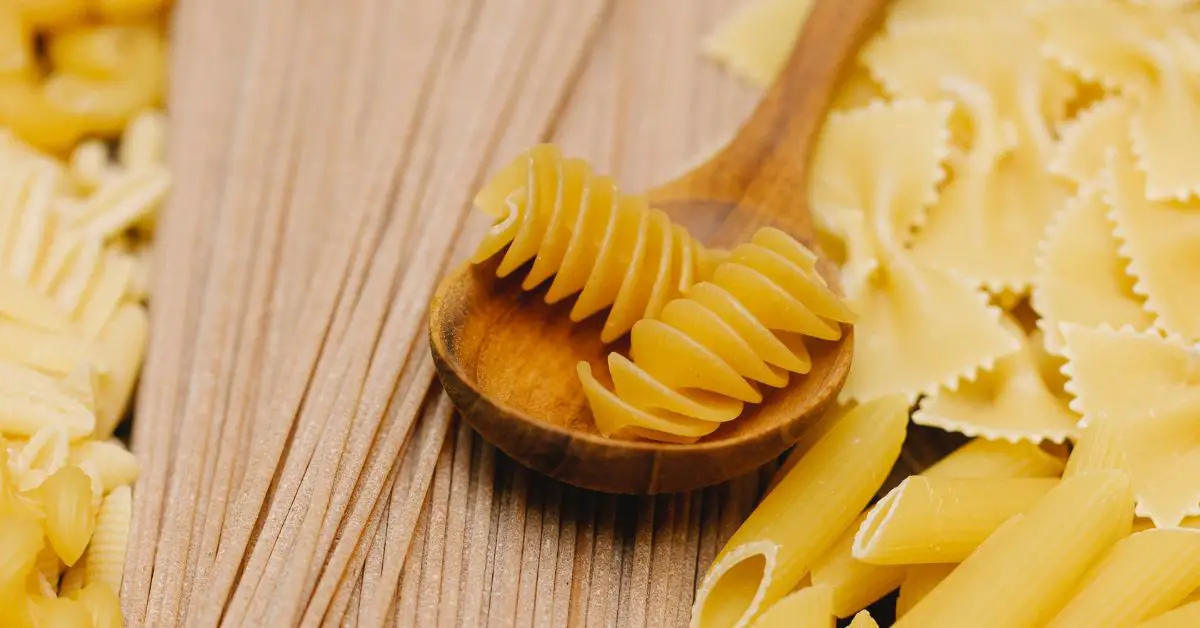
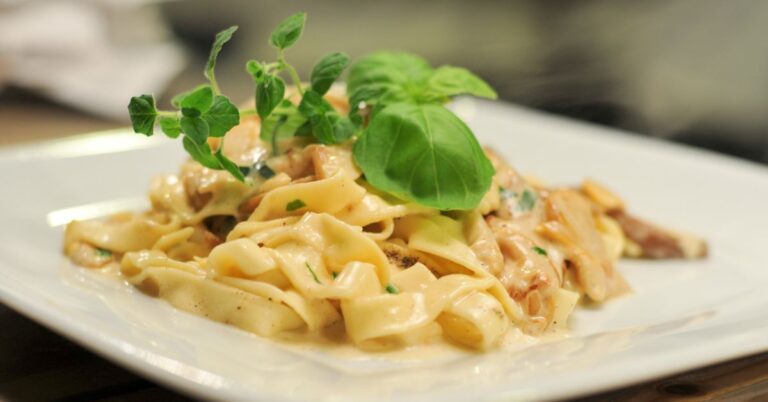
![Difference between penne lisce and penne rigate? [Smooth vs Ridged]](https://whyitalians.com/wp-content/uploads/2022/10/penne-liscie-and-rigate-pack-768x402.jpg)
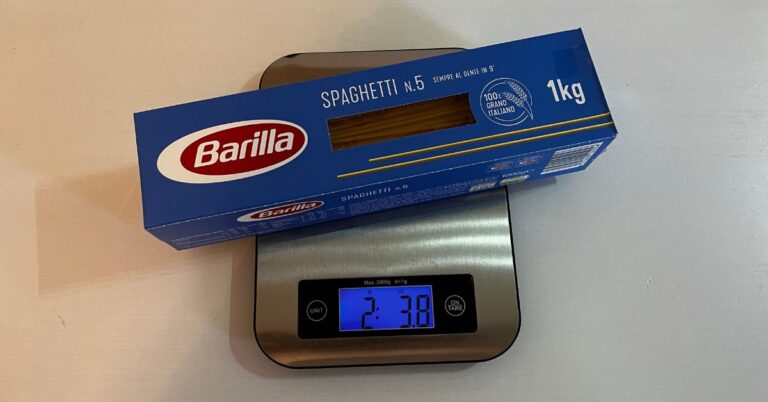
![Does canned pasta exist in Italy? [that’s why we hate it]](https://whyitalians.com/wp-content/uploads/2022/12/ravioli-pasta-in-a-can-768x402.jpg)
